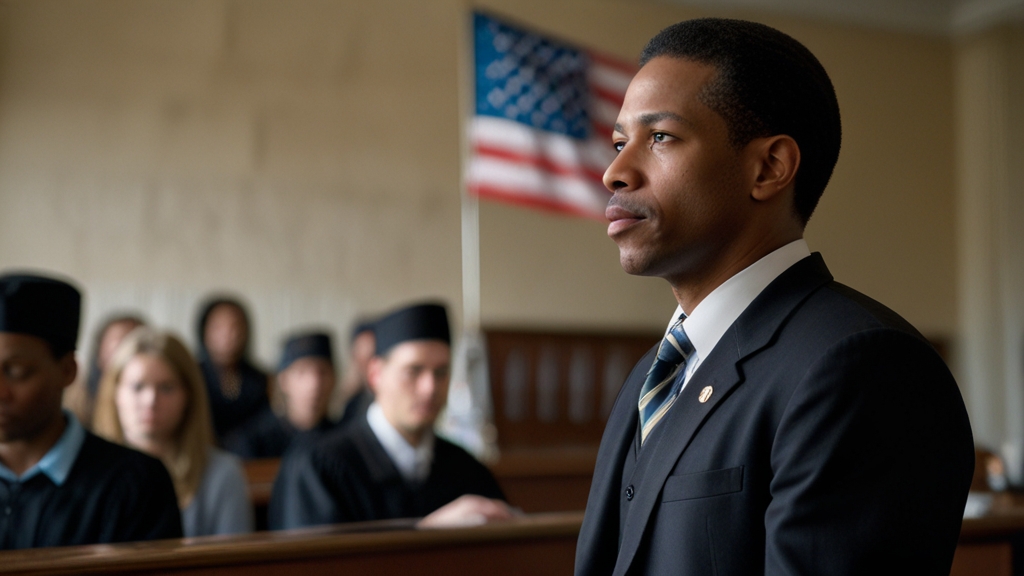Human rights in the U.S. are fundamental to the country’s democratic values. They ensure that every individual is treated with dignity, fairness, and equality. This article delves into the concept of human rights in the U.S., exploring their history, significance, legal framework, and current challenges.
Introduction to Human Rights in the U.S.
Importance of Human Rights
Human rights in the U.S. ensure that individuals live without fear of discrimination, violence, or oppression. They form the basis for a fair and just society.
Historical Context
The history of human rights in the U.S. is marked by significant events and movements, such as the abolition of slavery, the civil rights movement, and the fight for gender equality.

The Legal Framework for Human Rights in the U.S.
The Constitution and Bill of Rights
The U.S. Constitution and the Bill of Rights are foundational documents that outline the country’s commitment to human rights. They guarantee freedoms such as speech, religion, and assembly.
Key Amendments Related to Human Rights
Several amendments to the Constitution, such as the 13th, 14th, and 19th Amendments, have been crucial in expanding and protecting human rights in the U.S.
Federal and State Laws
Both federal and state laws play vital roles in protecting human rights. Laws like the Civil Rights Act and the Americans with Disabilities Act enforce equality and prevent discrimination.
Role of the Supreme Court
The U.S. Supreme Court interprets the Constitution and laws, making landmark decisions that shape the understanding and application of human rights.

Major Human Rights Issues in the U.S.
Civil Rights
Civil rights ensure individuals’ freedom from discrimination based on race, gender, and other characteristics.
Economic and Social Rights
Economic and social rights address access to resources such as education, healthcare, and housing. Ensuring these rights is crucial for reducing inequality.
Women’s Rights
Women’s rights focus on achieving gender equality in areas like employment, education, and reproductive health. Movements like #MeToo highlight ongoing challenges.
LGBTQ+ Rights
LGBTQ+ rights ensure that individuals can live without discrimination based on sexual orientation or gender identity. Legal recognition of same-sex marriage was a significant milestone.
Immigrant Rights
Immigrant rights protect individuals from discrimination and ensure fair treatment in areas like employment, education, and access to services.
Challenges in Protecting Human Rights in the U.S.
Systemic Racism
Systemic racism remains a significant barrier to achieving equality. It has an impact on many facets of life, including as work, education, and criminal justice.
Economic Inequality
Economic inequality poses challenges to ensuring that all individuals can enjoy their human rights. Addressing poverty and unemployment is essential.
Access to Healthcare
Access to affordable and quality healthcare is a human right. The U.S. faces challenges in ensuring that everyone can receive necessary medical care.
Gender Discrimination
Despite progress, gender discrimination persists in the U.S. Women and gender minorities still face barriers in achieving full equality.
Immigration Policies
Immigration policies can impact human rights, particularly regarding family separation, detention conditions, and deportation practices.
Efforts to Improve Human Rights in the U.S.
Government Initiatives
The U.S. government has implemented various initiatives to protect and promote human rights. These include legislation, policies, and programs aimed at addressing specific issues.
Non-Governmental Organizations
They hold authorities responsible, offer support, and create awareness.
Grassroots Movements
Grassroots movements have been instrumental in driving change and raising awareness about human rights issues. Movements like Black Lives Matter have gained significant momentum.
International Cooperation
Participation in treaties and agreements underscores this commitment.
Case Studies of Human Rights in Action
Brown v. Board of Education
Brown v. Board of Education, a major Supreme Court decision, ruled that racial segregation in public schools was unconstitutional. This ruling represented a significant win for civil rights.
Roe v. Wade
Roe v. Wade was a landmark decision that recognized women’s right to choose an abortion. It remains a pivotal case in the fight for reproductive rights.
Obergefell v. Hodges
Obergefell v. Hodges legalized same-sex marriage nationwide, ensuring that LGBTQ+ couples have the same marriage rights as heterosexual couples.
The Future of Human Rights in the U.S.
Emerging Issues
Emerging issues such as data privacy, climate change, and digital rights are becoming increasingly relevant. Addressing these issues is crucial for the future of human rights.
Legislative Reforms
Ongoing legislative reforms aim to address gaps and weaknesses in existing laws. These reforms focus on enhancing protections and expanding rights.
Role of Technology
Technology can both promote and threaten human rights. Ensuring that technological advancements respect and protect human rights is essential.
Continued Advocacy
Continued advocacy and activism are vital for advancing human rights. Engaging with policymakers, raising awareness, and supporting marginalized communities are key strategies. Understanding Human Rights in the U.S. is very important.

FAQs About Human Rights in the U.S.
Why are human rights important in the U.S.?
Human rights in the U.S. ensure that individuals live without fear of discrimination, violence, or oppression. They form the basis for a fair and just society.
How does the Constitution contribute to the defense of human rights?
The U.S. Constitution and the Bill of Rights outline the country’s commitment to human rights. They guarantee fundamental freedoms and protections.
What challenges do human rights face in the U.S.?
Challenges include systemic racism, economic inequality, access to healthcare, gender discrimination, and immigration policies.
How can individuals advocate for human rights?
Individuals can advocate for human rights by participating in grassroots movements, supporting NGOs, raising awareness, and engaging with policymakers.
What are some landmark human rights cases in the U.S.?
Landmark cases include Brown v. Board of Education, Roe v. Wade, and Obergefell v. Hodges. These cases have significantly shaped human rights in the U.S.
What is the future of human rights in the U.S.?
The future involves addressing emerging issues, legislative reforms, the role of technology, and continued advocacy to promote and protect human rights.
How do international bodies influence human rights in the U.S.?
The U.S. collaborates with international bodies to promote human rights globally. Participation in treaties and agreements underscores this commitment.
What are the key amendments related to human rights in the U.S.?
Key amendments include the 13th, 14th, and 19th Amendments, which have been crucial in expanding and protecting human rights in the U.S.
Conclusion
Human rights in the U.S. are fundamental to the country’s democratic values. They ensure that every individual is treated with dignity, fairness, and equality. The Constitution, federal and state laws, and landmark Supreme Court decisions form the backbone of the legal framework protecting these rights. Despite challenges, continuous efforts by the government, NGOs, grassroots movements, and international bodies contribute to the advancement and protection of human rights. As new issues emerge and society evolves, it is crucial to remain vigilant and committed to promoting and protecting human rights for all.
